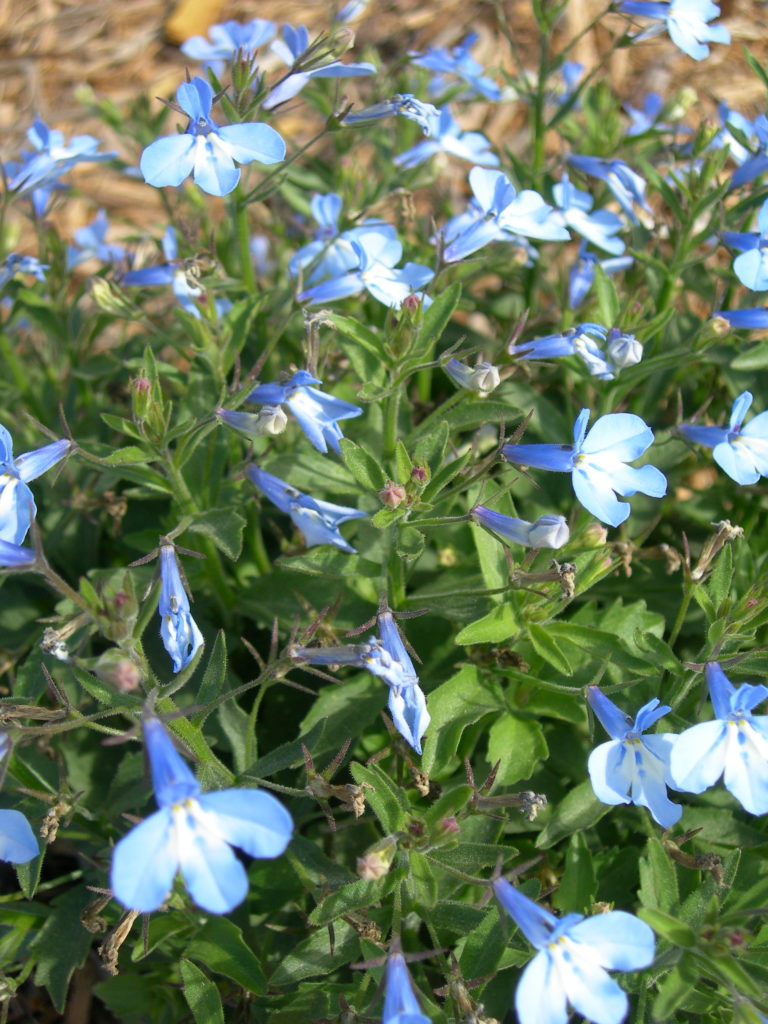
Dear Carol, I am looking to plant blue flowers in my winter flower beds. Any suggestions? A: Named after the botanist Matthias de Lobel, a native of Lille, France, Lobelia erinus, is a short – lived perennial used as an annual for great true blue color in the winter landscape here on the Treasure Coast and other warm regions. Also known as Bellflower or Edging Lobelia, this garden beauty has been in cultivation for 200 years or more. Lobelia’s origin is uncertain, many experts put it in South Africa.
The Lobelia plant can be trailing or compact, the delicate deep green leaves are simple, alternate on the stem with scalloped edges, and are less than 2 inches long. The flowers are the show and there are many varieties that produce blooms in shades of white, blue, pink, purple, and violet. Individually, the flowers are tubular with spreading lips. They are held in loose groups on graceful stalks above the foliage and bees are often seen visiting the flowers.
Lobelia likes a lot of light, but not heat. Plant it in full sun when the weather is cool. However, here in central and south Florida, a bit of afternoon shade is a good thing. Lobelia is tolerant of cool, but not freezing temperatures. The soil should drain well, but supplemental irrigation must be available. Consider the use of drip or low-volume irrigation for beds and pots of water-hunger Lobelia.
Though Lobelia can be planted by seed, it often takes as long as four months from germination to flowering. Instead, buy bedding plants from a local nursery or garden center where some of the new heat-resistant varieties such as ‘Techno Heat’ or ‘Lucia’ may be found. The plants are generally available starting in November or December. Plant 6 – 12 inches apart with a balanced slow-release fertilizer. Occasional nutrients may be added in the form of dilute soluble fertilizer, Lobelia is a heavy feeder.
The electric colors of Lobelia flowers make this a plant that gets noticed. It is a great annual for container gardens. Trailing varieties add pizazz to window boxes, patio pots, and hanging baskets. Use compact varieties in mass plantings, as a bed border, and in combination pots. Lobelia attracts butterflies and is beautiful cascading down a wall.
Plants can be cut back if flowering slows to encourage new blossoms. If planted in some shade, adventurous gardeners may be able to coax Lobelia through the hot, rainy summer, but most of us will remove Lobelia when temperatures soar. Few, if any pests cause problems for Lobelia.
This column first appeared in the Treasure Coast Newspapers.
Leave a Reply